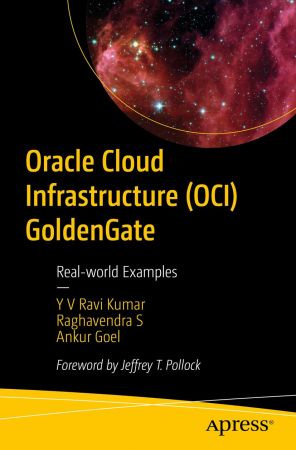Oracle Cloud Infrastructure (OCI) GoldenGate: Real-world Examples


Oracle Cloud Infrastructure (OCI) GoldenGate: Real-world Examples
English | 2024 | ISBN: 9798868803024 | 243 pages | PDF,EPUB | 13.3 MB
This book focuses on the utilization of GoldenGate Services (GGS) in conjunction with a microservices architecture on the Oracle cloud (OCI), primarily for data migration and integration across various data sources and targets.
The book begins with a practical example of utilizing GGS on a Marketplace VM, progressively advancing to in-depth discussions on implementing GoldenGate as a Service on OCI. The book offers illustrative guides for data replication between RDBMSs (such as Oracle, Postgres, and big data targets such as Kafka). Additionally, it explores monitoring techniques using Enterprise Manager and Grafana dashboards. A comparative analysis is presented between traditional VM-based GoldenGate installations and the OCI service model. Special attention is given to Zero Downtime Migration (ZDM) and leveraging GGS for database migration from on-premises to OCI. Some chapters address multi-cloud replication using OCI GGS and include real-life case studies.
By the end of this book you will have gained comprehensive insights into the architectural design of GoldenGate Services and will be adept at replicating data using GGS, enabling you to replicate setups in your own environments.
What You Will Learn
Set up GoldenGate Services for high availability (HA), disaster recovery (DR), migration of data to cloud, and moving data into the data lake or lakehouse
Perform logical migration of data to the cloud using the ZDM tool (ZDM uses GoldenGate internally).
Replicate data to big data targets
Monitor GGS using Enterprise Manager and Grafana
Replicate data in a multi-cloud environment
Who This Book Is For
Oracle database administrators who want to replicate data or use Oracle GoldenGate Services for migration and setup of high availability (HA) and disaster recovery (DR); and data engineers who want tobuild the data warehouse, data lake, data lakehouse to push data in near real-time





